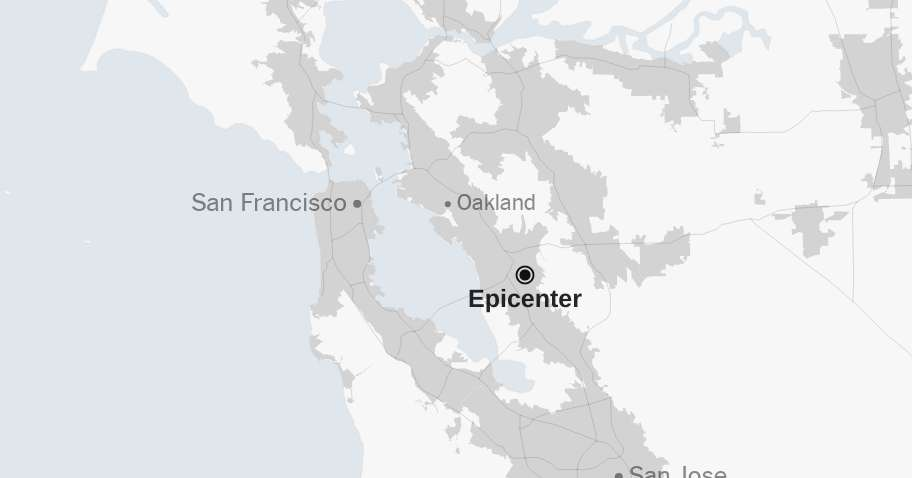Note: Map shows the area with a shake intensity of 3 or greater, which U.S.G.S. defines as “weak,” though the earthquake may be felt outside the areas shown. The New York Times
A series of small earthquakes shook the San Francisco Bay Area on Thursday, according to the United States Geological Survey.
The earthquakes all struck near Hayward, Calif., just south of Oakland.
A minor, 3.3-magnitude earthquake happened at 11:52 a.m. Pacific time about 1 mile east of Hayward, Calif., data from the agency shows.
Another quake with a magnitude of 3.6 occurred shortly before 2 p.m. and was felt as far away as San Francisco. The U.S.G.S. initially estimated that the quake had a magnitude of 3.7.
As seismologists review available data, they may revise the earthquake’s reported magnitude. Additional information collected about the earthquake may also prompt U.S.G.S. scientists to update the shake-severity map.
An aftershock is usually a smaller earthquake that follows a larger one in the same general area. Aftershocks are typically minor adjustments along the portion of a fault that slipped at the time of the initial earthquake.
Quakes and aftershocks within 100 miles
The quakes happened on the Hayward Fault, one of a handful of major faults that cut through the San Francisco Bay Area. It may be a little less famous than the San Andreas Fault that ruptured in 1906 and 1989, but seismologists say it’s just as capable of causing the Big One.
In a 2018 report, the U.S.G.S. looked at what would happen if a magnitude 7.0 earthquake occurred on the Hayward Fault and estimated that 800 people would die and 18,000 would be injured from damage to buildings and structures. The cost of property loss and business disruption was estimated to be $82 billion.
The U.S.G.S. called the Hayward Fault among the most dangerous faults in the country because it runs through a densely populated region.
Aftershocks can occur days, weeks or even years after the first earthquake. These events can be of equal or larger magnitude to the initial earthquake, and they can continue to affect already damaged locations.
When quakes and aftershocks occured
Source: United States Geological Survey | Notes: Shaking categories are based on the Modified Mercalli Intensity scale. When aftershock data is available, the corresponding maps and charts include earthquakes within 100 miles and seven days of the initial quake. All times above are Pacific time. Shake data is as of Thursday, Feb. 13 at 4:33 p.m. Eastern. Aftershocks data is as of Saturday, Feb. 15 at 3:38 a.m. Eastern.



